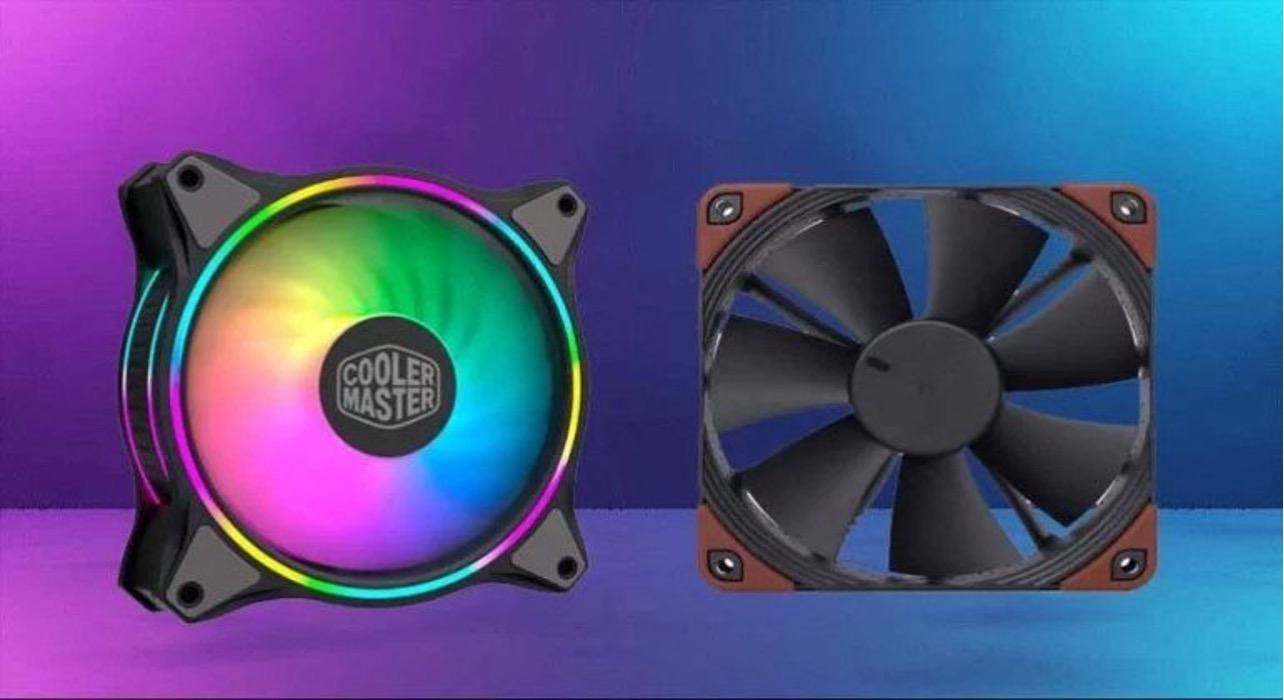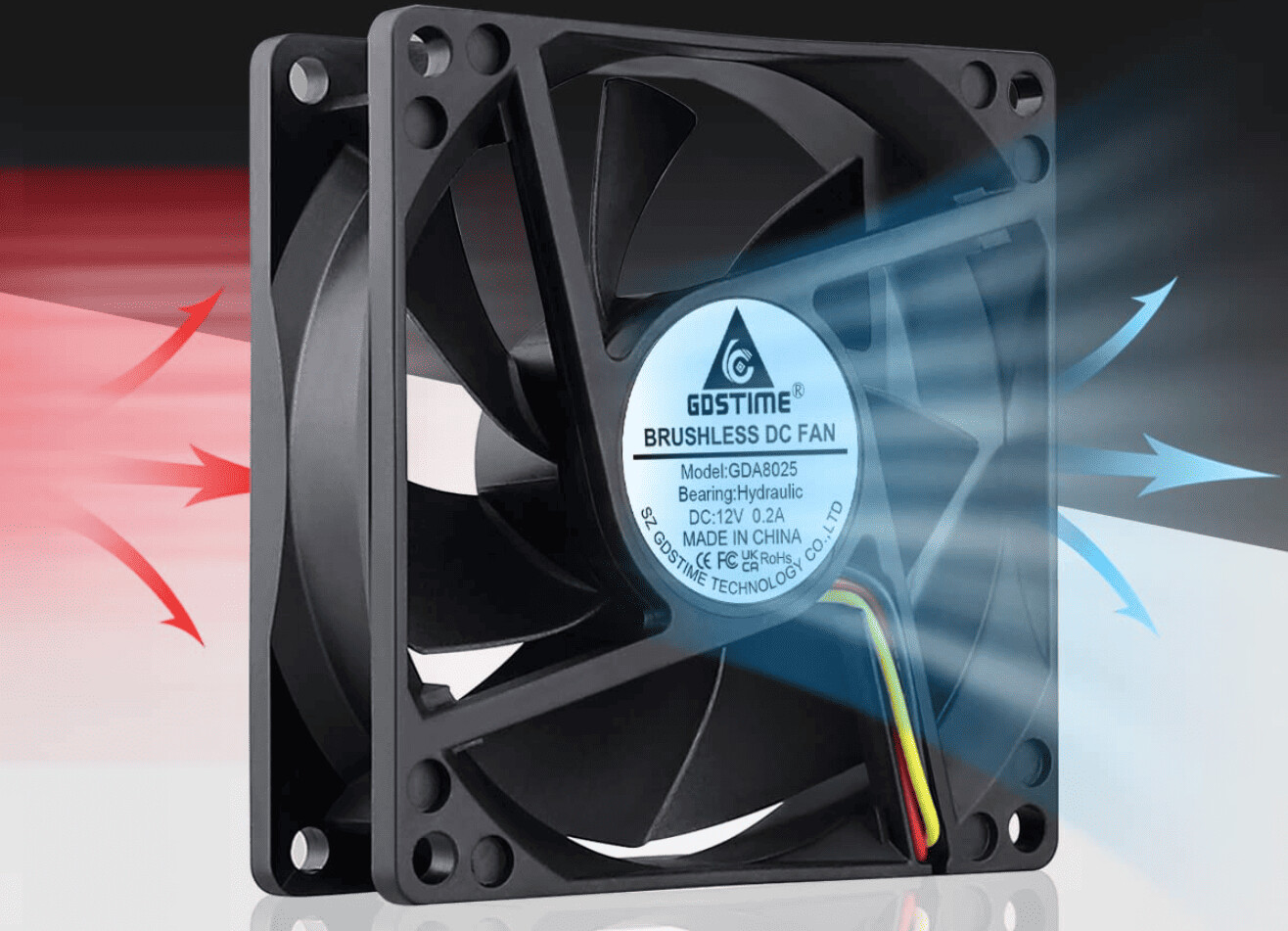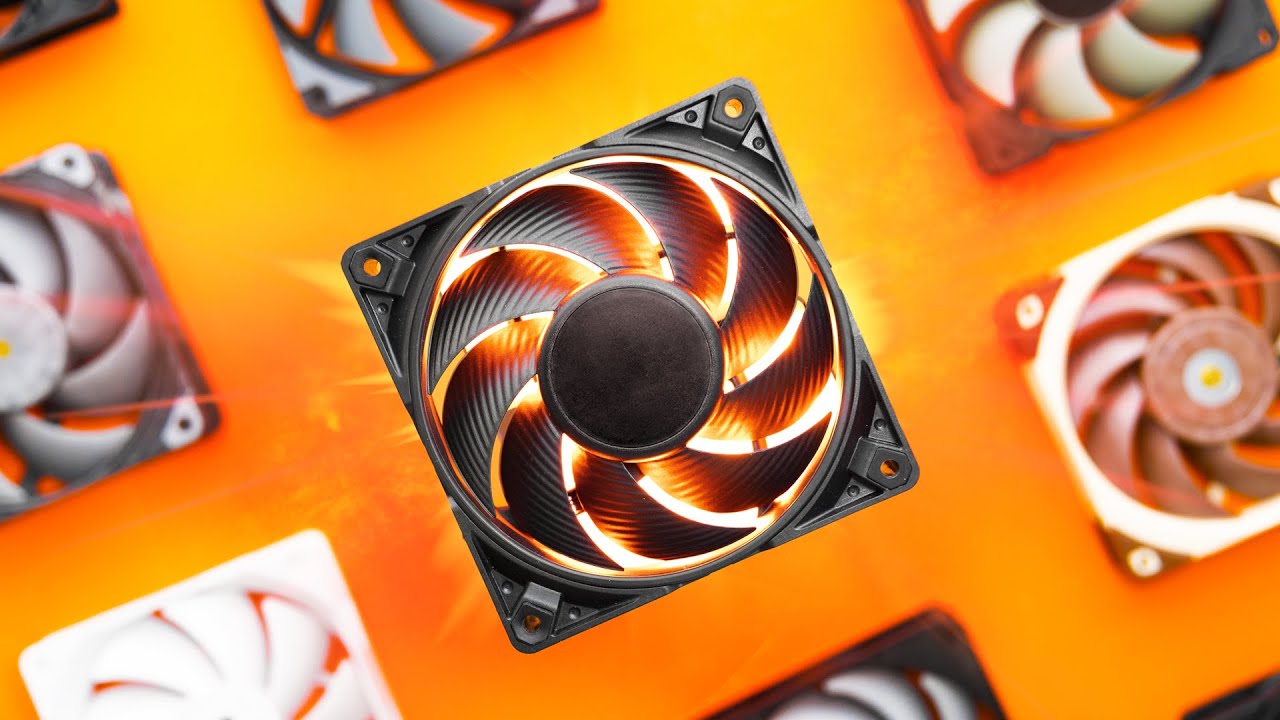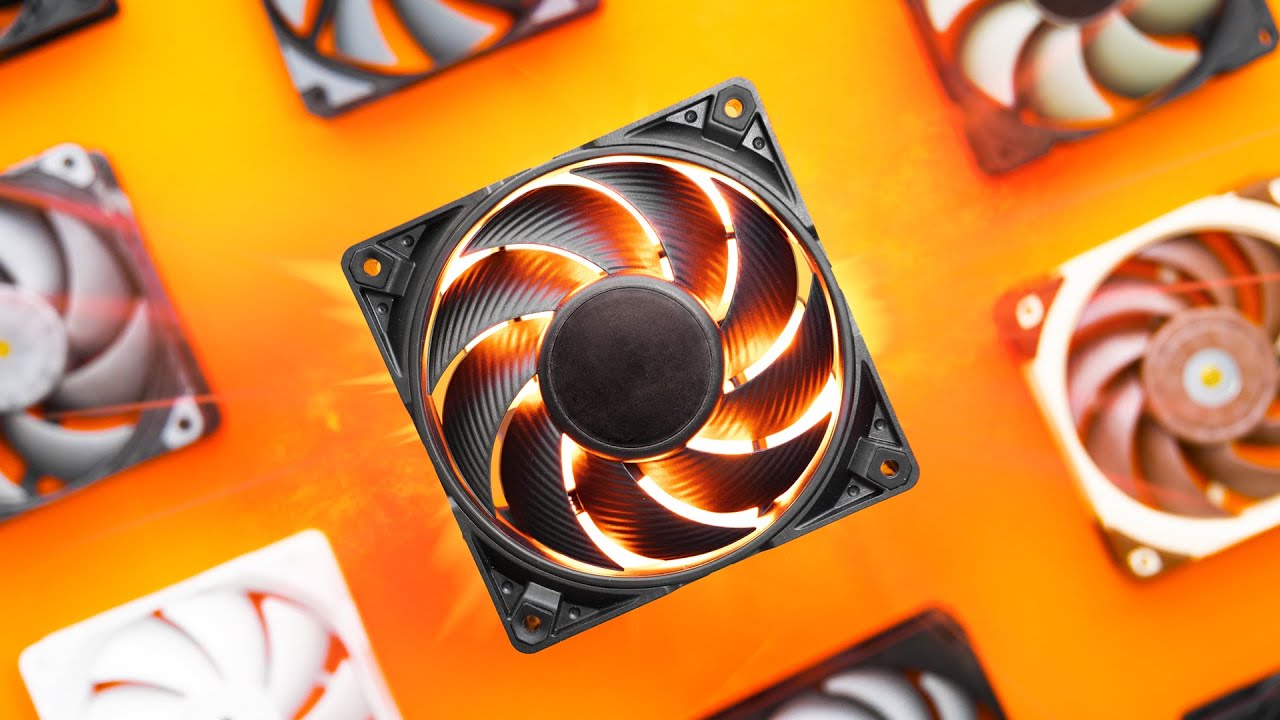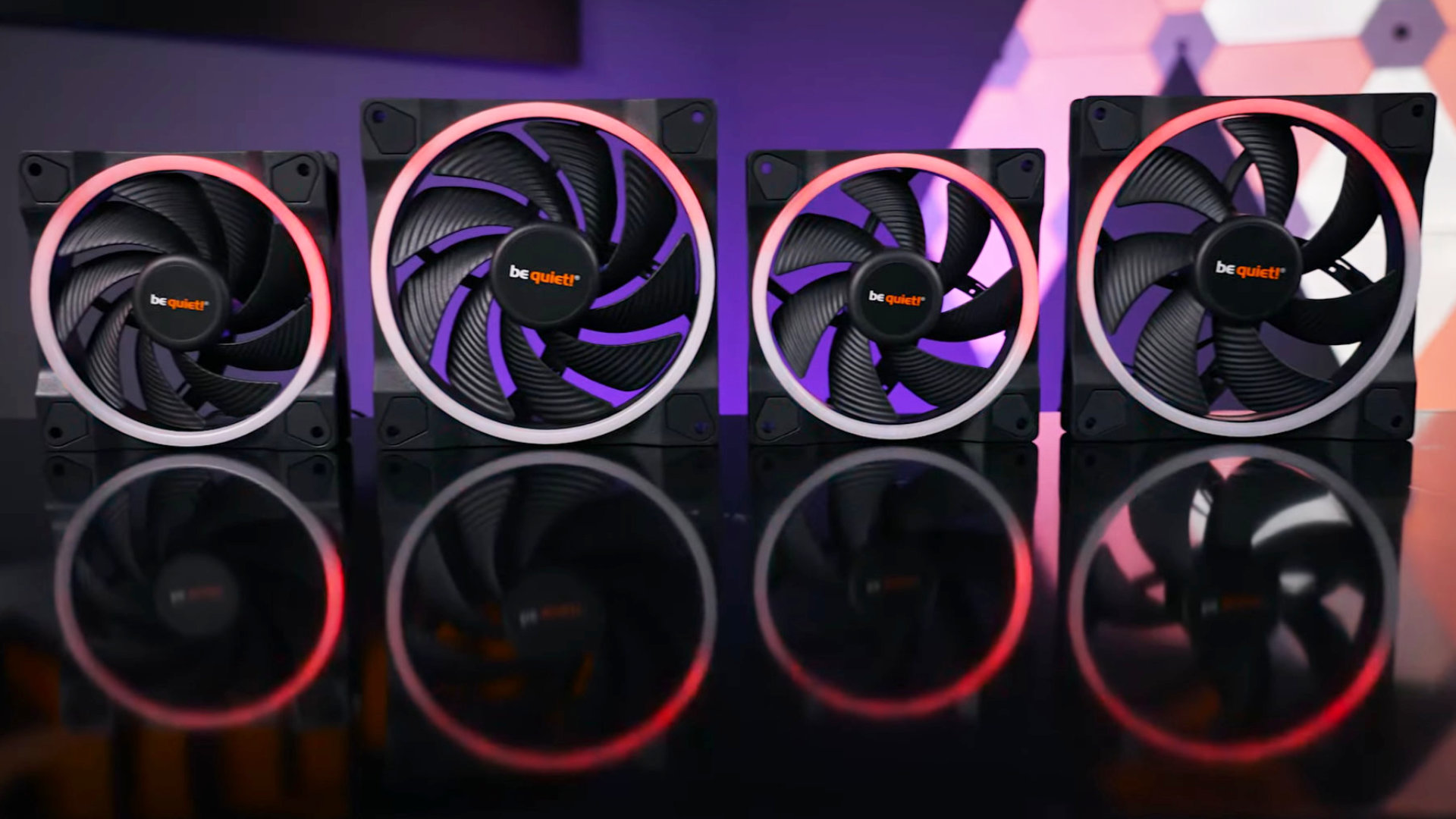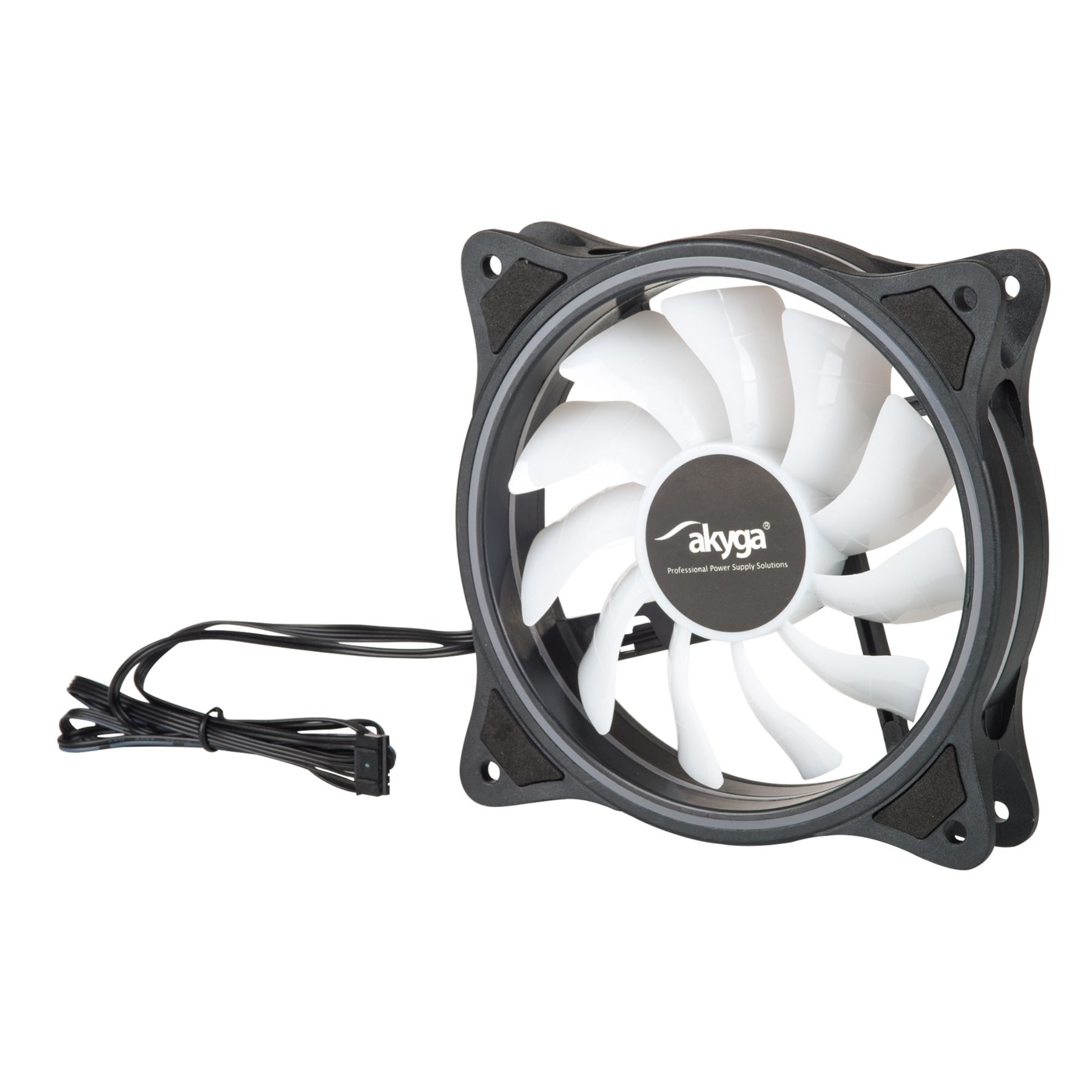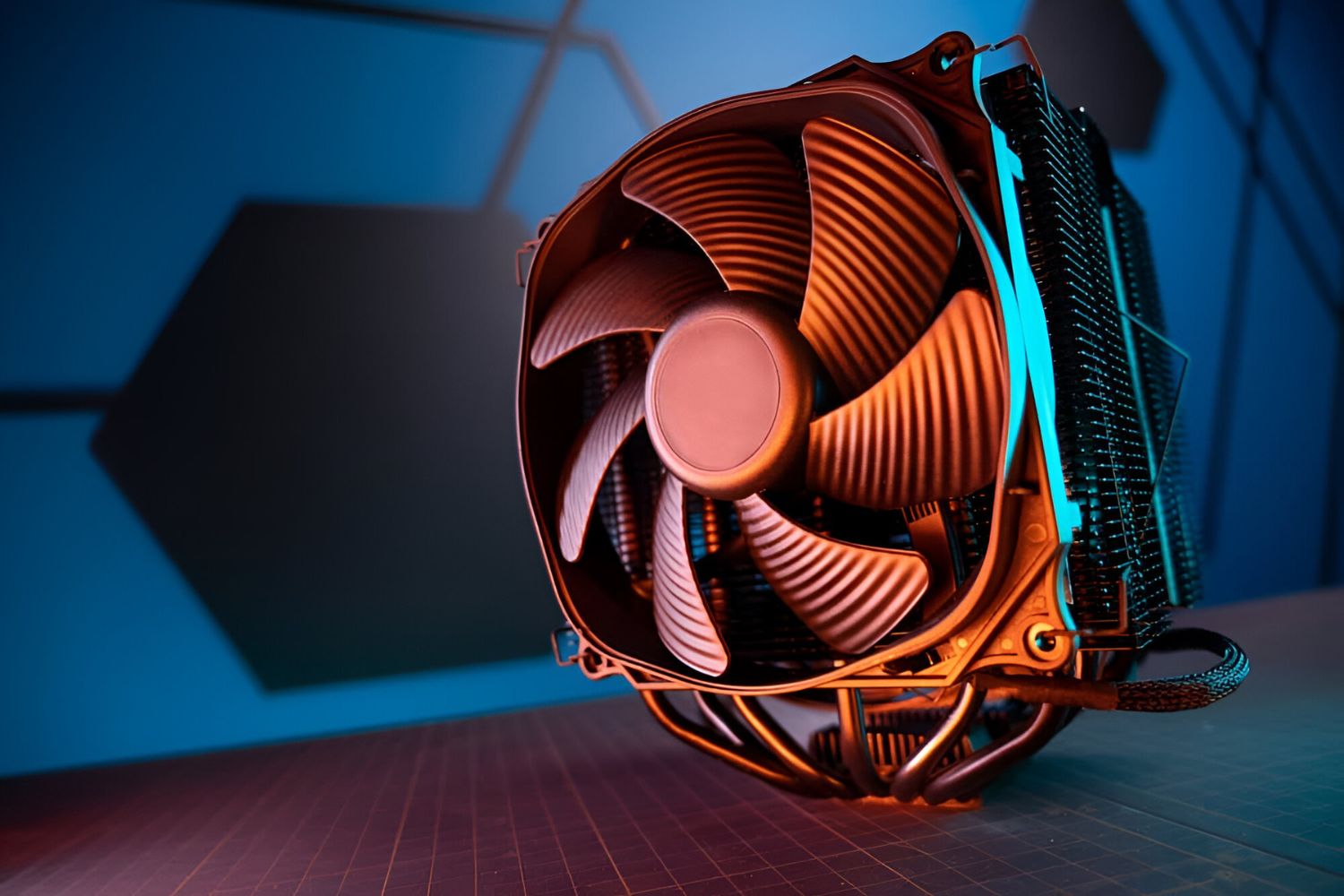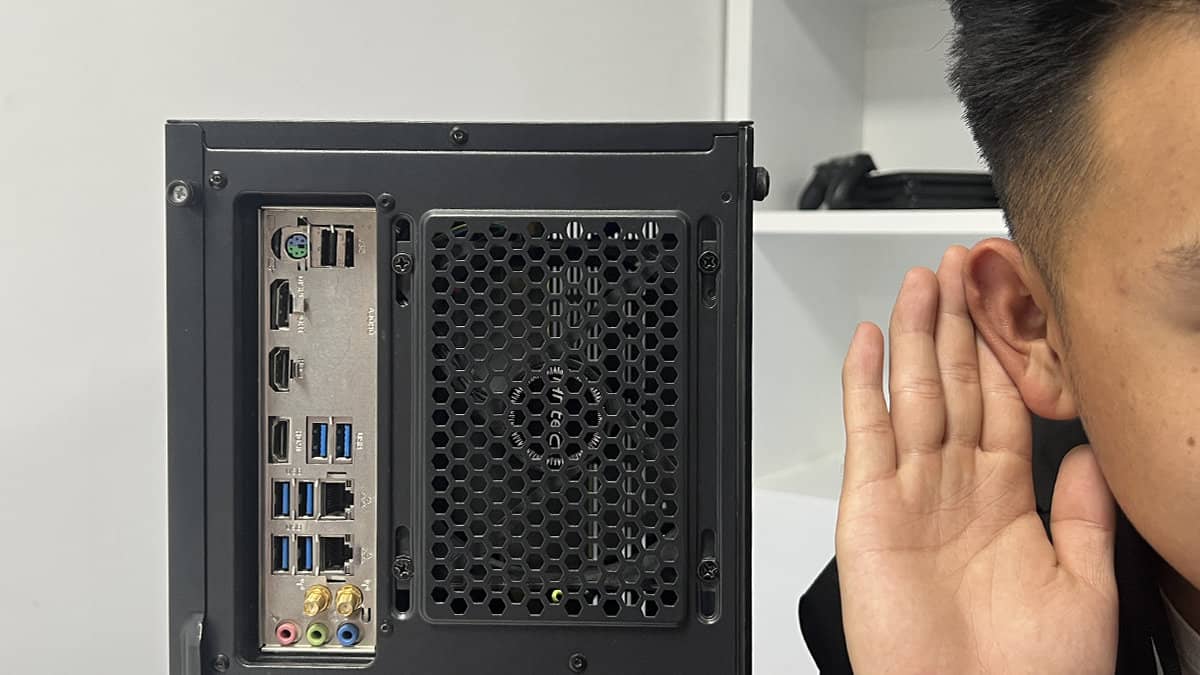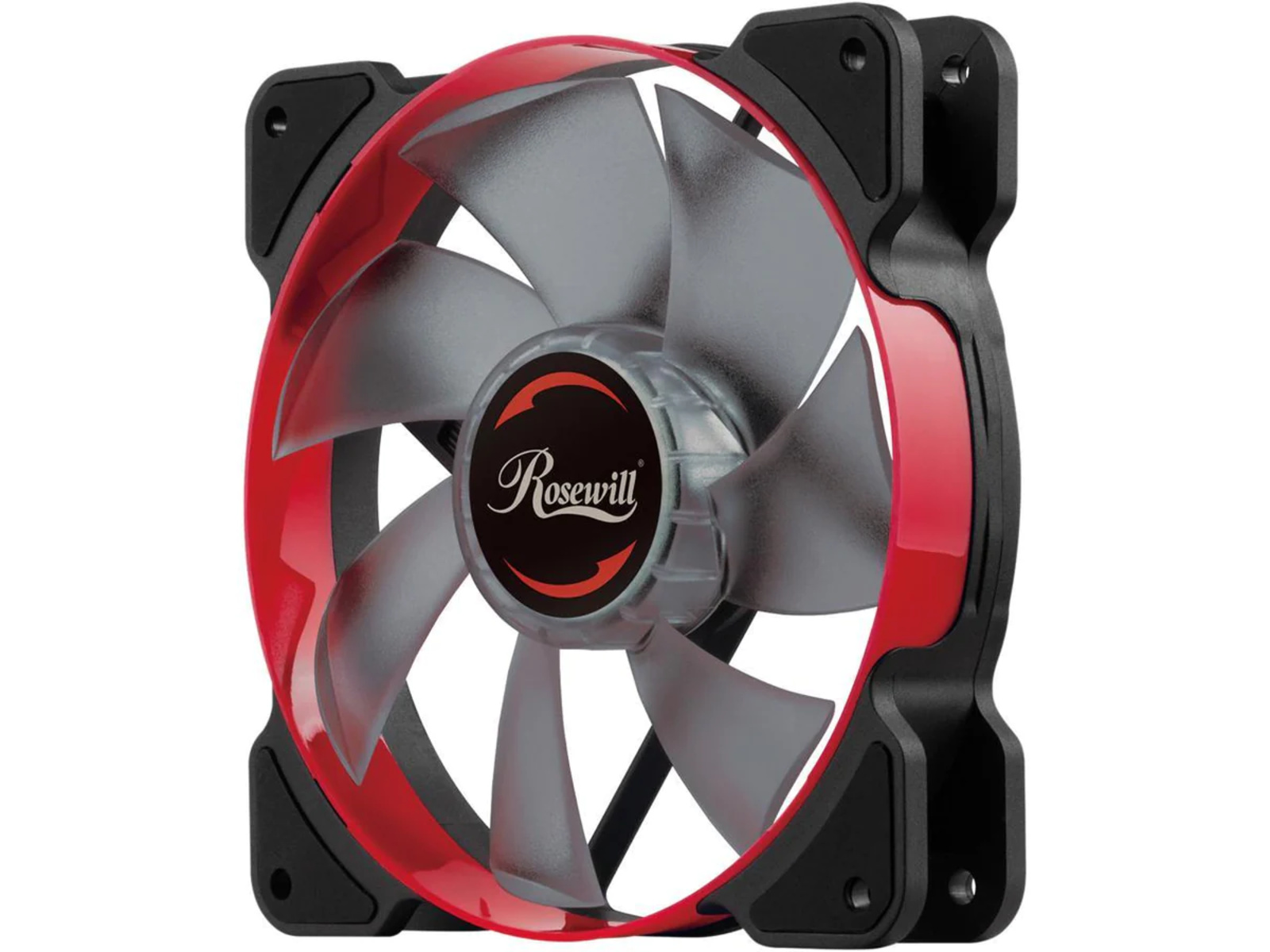Introduction
When it comes to keeping your computer cool, having a reliable case fan is crucial. A case fan, also known as a computer fan or cooling fan, helps to dissipate heat generated by the components inside your computer case. One important factor to consider when choosing a case fan is the CFM, or cubic feet per minute, rating.
CFM refers to the amount of air that a fan can move in a minute. It represents the fan’s airflow performance, indicating how effectively it can cool your computer. The higher the CFM rating, the greater the amount of air the fan can move, resulting in better cooling.
Understanding the importance of CFM in case fans is essential to ensure optimal cooling for your system. The right CFM rating can prevent overheating and extend the lifespan of your computer’s components.
In this article, we will delve into the factors to consider when determining a good CFM for a case fan, how to calculate the required CFM for your specific system, and the ideal CFM range for different PC setups.
By the end of this article, you will have a clear understanding of CFM and be able to choose the right case fan with confidence.
What is CFM?
CFM stands for “cubic feet per minute.” It is a measurement that quantifies the volume of air that a fan can move in one minute. CFM is commonly used to assess the airflow performance of case fans and other cooling devices.
Imagine a case fan as a small turbine inside your computer case. Its purpose is to draw in cool air from the surroundings and expel hot air generated by the components. CFM measures how effectively the fan can accomplish this task.
The higher the CFM rating, the more air the fan can move. This is crucial for cooling your computer, as increased airflow helps dissipate heat and prevent components from overheating. Components such as the CPU, GPU, and hard drives generate a significant amount of heat during operation, and a high CFM-rated fan can efficiently remove this heat, keeping your system running smoothly.
It’s important to note that CFM is not the only factor to consider when choosing a case fan. Static pressure, noise level, and fan size should also be taken into account. However, CFM is a fundamental metric that directly impacts the cooling capability of the fan.
CFM is typically listed in the specifications of case fans, allowing you to compare various models and choose the one that best fits your cooling needs. While it may be tempting to opt for the fan with the highest CFM, there are other considerations to keep in mind, such as noise level and power consumption. A balance must be struck between high CFM and overall fan performance.
Now that we understand what CFM is and its importance for cooling, let’s explore the factors to consider in determining a good CFM for a case fan.
Importance of CFM in Case Fans
The CFM rating of a case fan is integral to its effectiveness in cooling your computer system. Adequate airflow is crucial to prevent overheating, improve component performance, and increase the overall lifespan of your computer.
High CFM ensures that a case fan can efficiently move a large volume of air through your computer case. This is especially important when you have high-performance components that generate significant heat, such as gaming GPUs or powerful processors. Without sufficient airflow, these components can quickly reach high temperatures, leading to reduced performance and even system instability.
By providing adequate airflow, a case fan with a good CFM rating helps to dissipate heat and maintain the optimal temperature for your components. This not only improves performance but also helps to prevent thermal throttling, a condition where the components automatically slow down to prevent overheating. By avoiding thermal throttling, you allow your components to operate at their full potential, resulting in smoother gaming experiences, faster rendering times, and more efficient multitasking.
In addition to preventing overheating, a case fan with a good CFM rating can also contribute to a quieter system. When components are not properly cooled, they may require the fan to operate at higher speeds or even trigger the system’s thermal control mechanisms. This can lead to increased fan noise, as the fan must work harder to keep the system cool. By ensuring adequate airflow with a high CFM-rated fan, you can maintain optimal temperatures without pushing the fan to its limits, resulting in a quieter computing experience.
Furthermore, an efficient case fan with a good CFM rating can help extend the longevity of your computer system. Consistently high temperatures can degrade components over time and potentially lead to premature failure. By investing in a case fan with sufficient CFM, you can maintain lower temperatures and minimize the risks of thermal damage, thus increasing the lifespan of your system.
To sum up, choosing a case fan with an appropriate CFM rating is crucial for maintaining optimal temperatures, preventing overheating, improving system performance, reducing noise levels, and extending the lifespan of your computer system.
Factors to Consider in Determining Good CFM for a Case Fan
When determining a good CFM (cubic feet per minute) rating for a case fan, it’s essential to consider several factors to ensure optimal cooling performance. While a higher CFM generally indicates better airflow, there are other considerations to keep in mind:
1. System Requirements: Assess the cooling needs of your specific system. High-performance gaming rigs or workstations may require more cooling power than standard desktops. Consider the heat generated by your components and the airflow restrictions in your case.
2. Case Size: The size of your computer case will determine the maximum fan size you can accommodate. Larger cases tend to have more space for fans, allowing you to install multiple fans or larger ones with higher CFM ratings.
3. Fan Placement: Determine where you want to install the case fan. Different areas of the case may require a specific fan size or offer varying levels of airflow obstruction. Factors such as front intake, rear exhaust, top-mounted, or side-panel fans can affect the overall cooling performance.
4. Noise Level: Consider the noise level produced by the fan. Higher CFM fans generally require higher RPM (rotations per minute), which can result in increased fan noise. If noise is a concern, look for fans with lower noise levels while still offering a good CFM rating.
5. Fan Type: There are various types of case fans, including standard fans, high-airflow fans, and static pressure fans. Each type is designed for specific purposes, such as maximizing overall airflow or overcoming resistance in tight spaces. Consider the nature of your setup and the components you need to cool when selecting the fan type.
6. Budget: Determine your budget for a case fan. Higher CFM fans with additional features may come at a higher price point. However, it’s crucial to strike a balance between budget and performance to ensure you’re getting a good value for your money.
By considering these factors, you can determine an appropriate CFM rating for your case fan that suits your specific cooling requirements, case size, noise preferences, and budget. It’s important to find the right balance between CFM, fan placement, noise level, and other factors to achieve optimum cooling performance for your computer system.
How to Calculate Required CFM for Your System
Calculating the required CFM (cubic feet per minute) for your system can help you determine the appropriate case fan to achieve optimal cooling. Here are the steps to calculate the required CFM for your specific setup:
1. Identify the Heat Output: Determine the total heat output of your system. This can be done by checking the thermal design power (TDP) of your CPU and GPU. TDP represents the maximum amount of heat generated by these components under typical load conditions.
2. Determine the Delta T: Find the temperature difference (delta T) between the ambient temperature and the maximum allowable temperature for your components. This information can usually be found in the specifications of your CPU and GPU. The delta T represents the temperature rise that you want to achieve through cooling.
3. Calculate Required CFM: Use the formula CFM = (Heat Output x 1.08) / Delta T. Multiply the heat output by 1.08 to convert it into BTU/hr (British Thermal Units per hour). Divide the result by the delta T value in degrees Fahrenheit to obtain the required CFM.
4. Consider Other Cooling Factors: Remember that other cooling factors, such as the efficiency of your case ventilation, other fans, and the overall case design, can influence the required CFM. It’s recommended to add an extra 10-20% to the calculated CFM to account for these factors.
5. Choose the Appropriate Fan(s): Once you have determined the required CFM, look for case fans that offer a comparable or higher CFM rating. Consider the fan size, noise level, and other factors discussed earlier to find the best match for your system.
It’s worth noting that this calculation provides a general guideline for determining the required CFM. Actual temperature and airflow within your case can be influenced by various factors, such as cable management, fan positioning, and case restrictions. Adjustments may be necessary based on your specific setup and preferences.
By following these steps, you can calculate an estimate of the required CFM for your system and make an informed decision when selecting the right case fan(s) to maintain optimal temperatures and ensure efficient cooling for your computer components.
Ideal CFM Range for Different PC Setups
The ideal CFM (cubic feet per minute) range for a case fan can vary depending on the specific setup and cooling requirements of your PC. While there is no one-size-fits-all answer, here are some general guidelines to help you determine the ideal CFM range for different PC setups:
1. Basic/Home Use: For general desktop or home use, where you have standard components and moderate heat generation, a case fan with a CFM rating between 50 to 75 should be sufficient. This range provides adequate airflow to maintain stable temperatures without excessive cooling power.
2. Gaming/High-Performance: Gaming PCs and systems with high-performance components require more cooling power. For these setups, aim for a case fan with a CFM rating between 75 to 100 or higher. This range helps to handle the increased heat generated during demanding gaming sessions or resource-intensive tasks, ensuring optimal performance and preventing overheating.
3. Overclocking/Intensive Tasks: If you plan to overclock your CPU or engage in heavy-duty tasks such as video editing or 3D rendering, you’ll need even more cooling power. Look for case fans with a CFM rating of 100 to 150 or higher. These fans can handle the significant heat generated by overclocked components and help maintain stable temperatures under extreme workloads.
4. Small Form Factor (SFF) Builds: In compact or small form factor builds where space is limited, choosing case fans with a higher CFM rating becomes crucial. Since airflow can be restricted due to the smaller size, aim for fans with a CFM rating of 75 to 100 or above. These higher CFM fans will help compensate for the reduced airflow and improve cooling efficiency in a smaller space.
Remember that these are general guidelines, and the actual CFM requirements can vary based on factors such as case design, fan placement, and component characteristics. It’s important to assess your specific setup, consider the heat generated by your components, and account for any overclocking or intensive tasks when deciding on the ideal CFM range for your PC.
By using case fans within the recommended CFM range for your PC setup, you can ensure effective cooling, maintain optimal temperatures for your components, and promote the overall longevity and stability of your system.
Popular Case Fan CFM Ratings
When it comes to case fans, different models and brands offer varying CFM (cubic feet per minute) ratings to suit different cooling needs. Here are some popular case fan CFM ratings that you may come across:
1. Low CFM Fans: Low CFM fans typically have ratings ranging from 30 to 50 CFM. These fans are suitable for basic desktop or home use where minimal cooling is required. They are often found in pre-built computers or low-power systems that have less heat-generating components.
2. Medium CFM Fans: Medium CFM fans typically have ratings ranging from 50 to 75 CFM. They are commonly used in gaming setups and general-purpose systems. These fans provide a good balance between airflow and noise level, improving cooling efficiency without being too loud.
3. High CFM Fans: High CFM fans offer ratings ranging from 75 to 100 CFM or even higher. They are ideal for gaming rigs, workstations, or systems with overclocked components that generate a significant amount of heat. These fans provide excellent airflow and more aggressive cooling, ensuring optimal performance under demanding conditions.
4. Static Pressure Fans: Static pressure fans are designed to overcome obstructions and provide efficient airflow in restricted spaces. They may have a slightly lower CFM rating compared to regular case fans, but they excel at pushing air through fine heatsinks or radiators. These fans are commonly used in liquid cooling setups and in cases with limited ventilation.
5. High-Airflow Fans: High-airflow fans focus on maximizing the amount of air moved without much consideration for static pressure. They often have CFM ratings above 100 CFM and are ideal for systems that require maximum cooling performance, such as intensive gaming or workstation builds.
It’s important to note that CFM is not the sole indicator of a case fan’s performance. Other factors, such as noise level, fan size, bearing type, and overall build quality, should also be taken into consideration when selecting a case fan.
Furthermore, it’s worth mentioning that different manufacturers may have variations in CFM ratings due to testing methods and fan design. It is always recommended to refer to manufacturer specifications and user reviews to ensure you are getting reliable and accurate CFM ratings for a particular case fan.
Ultimately, the choice of case fan with a specific CFM rating depends on your cooling requirements, PC setup, and personal preferences for noise level. Select a case fan that best fits your needs to ensure efficient and effective cooling for your computer system.
Conclusion
Choosing the right CFM (cubic feet per minute) for a case fan is crucial for maintaining optimal temperatures and ensuring efficient cooling for your computer system. By considering factors such as system requirements, case size, fan placement, noise level, and budget, you can determine the appropriate CFM rating for your specific setup.
Understanding the importance of CFM in case fans allows you to select the right fan to prevent overheating, improve component performance, reduce noise levels, and extend the lifespan of your system. The CFM rating directly impacts the fan’s airflow performance, indicating how effectively it can cool your computer.
Calculating the required CFM for your system allows you to estimate the necessary cooling power based on the heat output and desired temperature differential. By considering other cooling factors and taking into account the specific characteristics of your PC setup, you can select an appropriate CFM range to maintain optimal temperatures.
Different PC setups have different cooling requirements. Whether you have a basic desktop, a gaming rig, or a compact form factor build, the ideal CFM range will vary. Understanding the ideal CFM range for your specific setup helps ensure a balance between airflow and cooling efficiency.
Popular case fan CFM ratings span from low CFM fans for basic use, medium CFM fans for general purposes, and high CFM fans for gaming and overclocking. Static pressure fans and high-airflow fans offer specialized solutions for specific cooling needs.
In conclusion, selecting a case fan with the right CFM rating is crucial for maintaining a cool and stable computer system. By considering the factors discussed in this article and assessing your specific cooling requirements, you can confidently choose a case fan that will provide efficient cooling and optimal performance for your PC setup.







